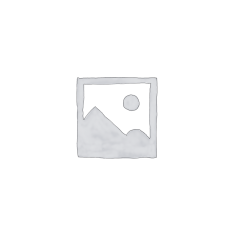Description
CHAPTER ONE
INTRODUCTION
BACKGROUND OF THE STUDY
The majority of offshore structures worldwide are reaching or are beyond their design lives. The expected life for offshore structure platforms is not so precise. However, the design life is predicted to be between 20 to 25 years depending on excessive loads, for example, environmental loads including wave, current loads, and impact loads during lifetime. These loads cause fatigues, cracks, corrosion and other essential damages in structures. Such ageing structures should always be under supervision and extensively maintained to decrease the possibility of damage from early stages that could result in loss of integrity. This can be achieved by developing robustness, accuracy, efficiencies and cost-effectiveness that allow data collection about the condition of the platform [1].
Almost half of the North Sea offshore platforms are approaching or have already passed their design life and creating complicated problems for the SI management of these platforms [2]. Therefore, there is a requirement for SI Monitoring techniques to increase certainty in structural integrity and to minimize inspection expenses. With SI monitoring techniques, structures can be inspected over an interval using various measurements, providing information about the offshore platforms’ structural integrity, safety, and reliability [3].
SIM techniques to detect these failure modes in the last ten years. The description of SIM techniques, as well as advantages, limitations, maturity in the offshore industry, probability of detection (POD) and monitoring capabilities of these techniques, have been reviewed in this thesis study.
OBJECTIVES OF THE STUDY
The objectives of this study are:
- To provide the basic information on generally available SI monitoring techniques.
- To identify where SI monitoring can complement existing inspection techniques.
- To study common requirements for development-in order to make SI monitoring more applicable in practice-has been included for the benefit of developers of SI monitoring technologies.
SIGNIFICANCE OF THE STUDY
The importance of maintaining structural integrity offshore is increasingly recognized and structural inspection plays a significant role in demonstrating ongoing integrity and the potential for life extension. Structural integrity (SI) monitoring provides greater confidence in structural integrity or to reduce inspection cost. It has been found that offshore experience of SI monitoring is limited to date and that current systems are for bespoke applications.
SCOPE OF THE STUDY
This document includes review and appraisal of SI monitoring methods which can be applied to submersibles structures for drilling and/or production operations.
Chapter 5. Case studies
5.1 System installation of AE sensors for jacket structures (Case study 1)
Proper selection of AE sensors is critical to getting accurate measurements. Besides choosing the right type of sensors, locating AE sensors in place is essential for jacket structures. The positions of AE sensors are dependent on the number of braces, nodes, and joints present in the structure. These points are characterized as critical points in the structure and are needed to monitor to increase integrity. In addition, AE sensors are dependent on the number of bracings and joints in the structure.
It is advisable that AE sensors can be mounted either externally or inside in dry hull members [3]. Installing the AE sensors in this place is necessary in order to monitor any potential crack propagation on the severed part that is already impacted by cracks. There are four AE sensors that are externally located close to nodes and joints, as indicated by red lines in Figure 24. The cables from the sensors are stored in a box. These cables are attached to a tension cable which is connected to topside [77].
Figure 28: Location of AE sensors in severed member [77]
Figure 25 shows the location of AE sensors for jacket platforms in three types of bracing systems: X-shape, V-shape and single shape, respectively, according to the SAP200 program [78]. The certain positions for the AE sensors are colored with the red circles in figure 25. A maximum 4-meter distance is acceptable between each sensor. The maximum distance between sensors should not exceed
4 meters, as this is the only way to receive acoustic signals accurately and obtain effective localization to find defects [79].
Figure 29: Proposed installment of AE sensors on Jacket structure’s surface [79]
Figure 26 displays another example installation for AE sensors for a J-structure design, in which they are positioned inside the jacket structure’s legs. A few AE sensors are used to monitor fewer areas for detecting flaws in this method. It also avoids attenuation due to refraction because the acoustic waves do not pass through water to arrive at the sensors. As a result, installing AE sensors inside legs can produce more accurate signals from other acoustic sources [63].
Figure 30: Proposed installment of AE sensors inside legs members of the jacket J structure [80]
5.2 Proper SI monitoring techniques in the offshore platform of Guneshli field Case study 2
A disastrous fire broke out on an offshore platform-10 in the Guneshli field in offshore Azerbaijan on December 4th, 2015. The oilfield, which predominantly produces oil and some gas, has been performed since the 1970s and was restored in the 1990s.
A heavy windstorm in the splash zone triggered damage in a natural gas riser, was shaken out the platform’s leg and caused the fire. This fire incident resulted in the deaths of 16 workers [81].
Figure 31: Fire in Guneshli platform [81]
These accidents increased the role of integrity monitoring techniques around the world. Structures positioned in the splash zone are considered to have a higher failure rate compared to structures located in other places. The area directly above and below the sea level is referred to as the “splash zone.” Offshore risers are exposed to more extreme wave loads because of deploying in corrosive conditions. Corrosion is more severe in the intertidal and splash zones on the risers because they are more likely to get damaged. If the risers are inspected routinely with non-destructive techniques such as long-range UT and eddy current, visual inspection, failures such as cracks, corrosion in risers could be found at the earlier stage. The riser could be changed or repaired before the fire occurred. This
Guneshli platform has been used after repairing the damage from the fire. Therefore, SI monitoring techniques should be implemented to maintain integrity and increase service life, especially in risers and welded connections.
This platform is a fixed jacket platform, and nowadays, different types of failure mainly occur in this platform due to ageing. On the other hand, this jacket is more sensitive to failures after the fire. Common crack initiation occurs in welds, present surface scratches and heat-affected areas in the material. Corrosion and fatigue cause damage and crack in the weld connections. Different SI techniques can be applied to maintain structural integrity in this platform:
Magnetic particle inspection is a cheaper and safe method to determine failures in structures. MPI is used to detect cracks for the first time. However, the accuracy of this method is lower than ultrasonic testing. If Additional detection is needed, Ultrasonic testing is used. With ultrasonic testing, embedded cracks can be detected, and the thickness of the wall can be measured to identify the level of corrosion in these structures.
For the items located in splash zone such as risers, visual inspection by ROV should be implemented routinely, and wall thickness can be measured by long- range ultrasonic techniques, as shown in Figure 17.
Robust noise monitoring, which is the combination of acoustic and vibration signals, could be used to identify the presence of different abnormalities in a platform’s technical condition at an earlier stage before they have a possibility of causing significant damage. Figure 32 displays the robust noise monitoring system in operation at the beginning of the latent period of the Fixed Platform’s shift into an emergency condition. Data about the technical condition of the platform’s parts can be obtained from received signals from acoustic (Accutech AM20) vibration- based sensors (BeanDevice AX-3D). These sensors are mounted on all critical items of the offshore platform. All received data are collected in the device of the CetanWay Controller. These collected data from acoustic and vibration sensors are then analyzed in the Getac A770 industrial computer. The cracks, corrosion and other failures can be detected with this data at an earlier stage [82]. This technique is useful to identify failures in offshore structures from the earlier stage, which can cause significant damage following time.
Figure 32 : Robust noise monitoring system (combination of vibration and acoustic sensors) [82]
Conclusion with future recommendation
- The majority of offshore jacket structures in the North Sea and the Caspian Sea are running beyond their service life and must be reviewed and upgraded in order to potentially extend their service life. There is a number of codes and standards such as ISO, NORSOK, DNV that can make reference for SI monitoring. Different offshore structures, their design, members, critical parts have been
- The platforms are faced with several types of loads, such as gravity loads, hydrostatic loads, environmental loads, accidental loads, and these loads cause fatigue in offshore structures. Fatigue results in the crack, principally at welded connection by growing through different stages and leading to Fatigue can be estimated through Hot-spot analysis and S-N curves which is essential for choosing proper SI monitoring techniques
- Several SI monitoring techniques have been analyzed in this chapter. These techniques can be classified into two parts: Local and global monitoring Global techniques are used for monitoring of entire structure, while local techniques are limited to specific points where the damage occurred. However, Local techniques have high accuracy and efficiency compared to global techniques. GPS and RAMSTM as global techniques are mainly used for detecting the position of semi-submersible and FSPO platforms. Acoustic fingerprinting has not already been tested in the offshore industry, and they are considered as unproven. Acoustic emission technique has been indicated during the tests that it gives real-time monitoring for finding small defects in steel structures such as yielding or crack signals. It allows defining cracks in the early stages of development, and proper corrective measurements can be carried out before significant damage occur. While Ultrasonic testing is mainly used for detecting wall thickness, it has a monitoring capacity to detect even embedded cracks. Other SI monitoring techniques such as MPI, Eddy current and NFRM are used for surface- breaking cracks. Although Visual testing by ROV, camera system can detect visible and surface cracks, it is considered the most effective method because of low cost and immediate results. Full-member severance can be obtained by NFRM.
AE, UT, RT, GPS, Air gap monitoring, strain monitoring and RAMSTM have a high
probability of detection.
- SI monitoring techniques can be used to detect some critical parts which are difficult to inspect. These include welded connection, grouted connection, pile sleeves, ring-stiffness joints, items in the splash zone, etc. Life extension can be achieved with inspection of these
- 2 case studies have been carried out in this thesis In the first case study, the location of AE sensors to monitor potential cracks. These sensors are recommended to install the legs members. In this way, the number of AE sensors can be reduced, attenuation can be avoided, and accurate data can be achieved. In the second case study, fire in Guneshli Platform and required SI techniques after repair to maintain the structural integrity of the ageing platform have been reviewed. Ultrasonic testing is required in most cases to detect wall thickness and exact millimeters of length. But, it is a high cost. That is why MPI is used to detect cracks for the first time. If Additional detection is needed, Ultrasonic testing is used. ROV and long-range ultrasonic testing are SI techniques that can be used to analyze risers routinely. Robust noise monitoring, which combines acoustic emission and vibration-based techniques, could be the best monitoring technique for detecting failures earlier.

